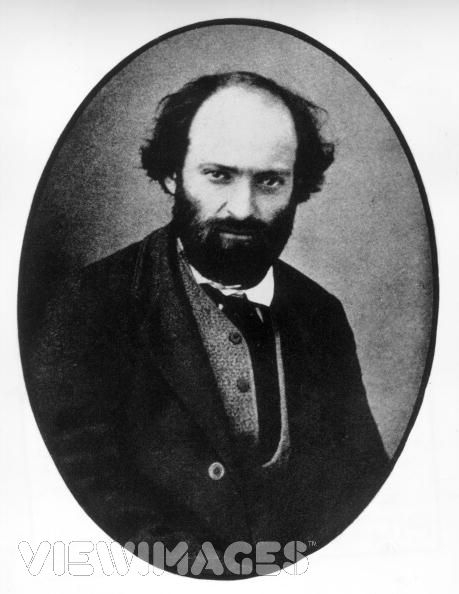
Paul Cézanne
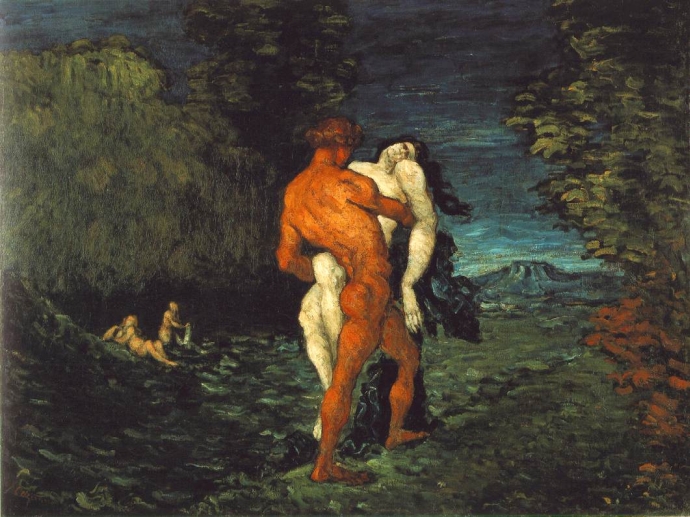
The Abduction
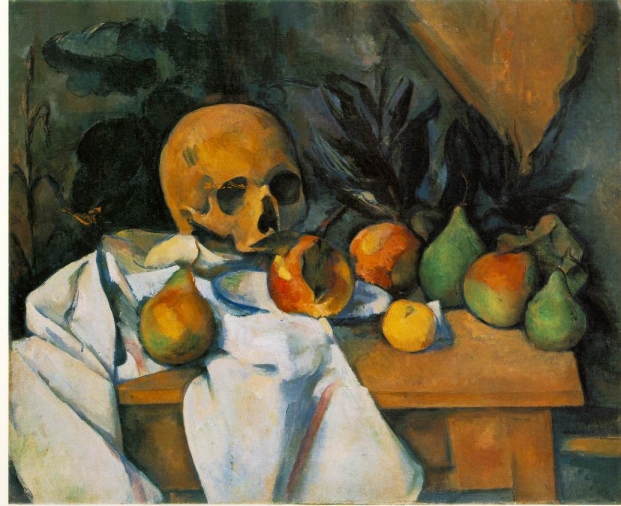
Still Life with Skull
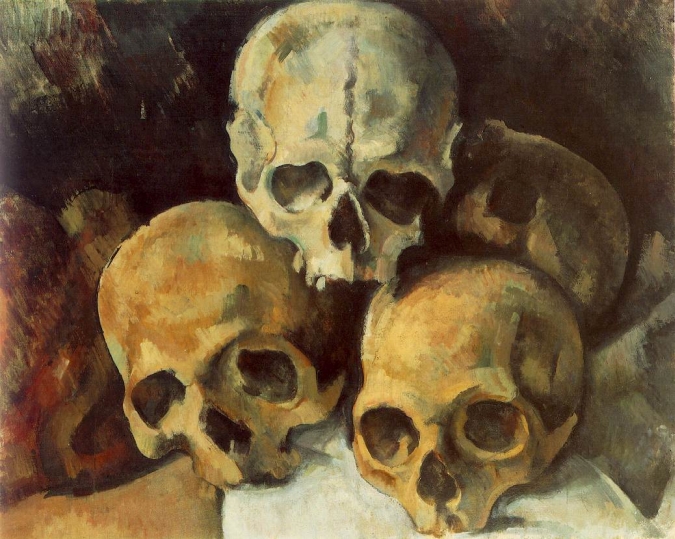
Pyramid of Skulls
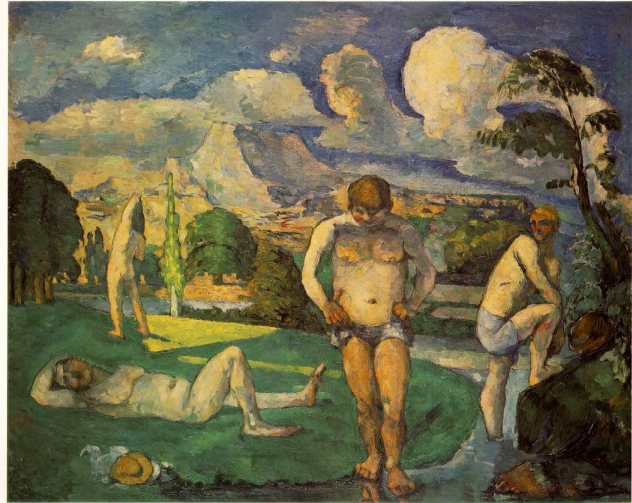
Les Baigneurs au Repos
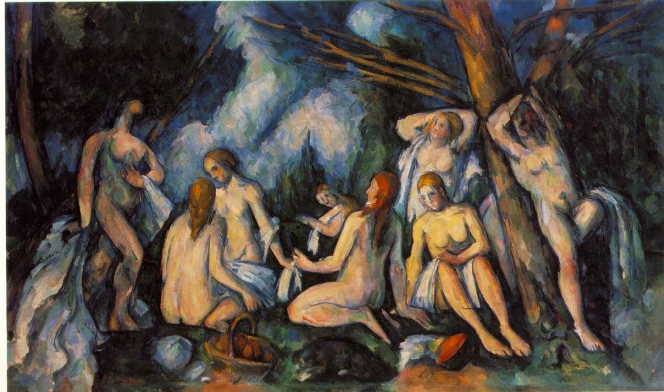
Les Grandes Baigneuses
Paul Cézanne was born on January 19, 1839, as the son of a wealthy banker in the southern French town of Aix-en-Provence. Cézanne develops artistic interest at an early age and joins his boyhood companion and author Emile Zola in Paris in 1861, after many disputes with his father over his desire to dedicate himself to painting. Cézanne's stay in Paris lasted only six months. Though attracted by the more radical art forms in Paris, admiring the innovating works by Eugene Delacroix, Gustave Courbet and Edouard Manet, he destroys many canvases during depressive moments and returns home full of self-doubt. A year spent working with his father, however, convinced him to try a painter's life again. Cézanne's early works were dark and composed of heavy, fluid pigment suggesting the moody, romantic expression of previous generations. Cézanne returns to Paris suffering a new defeat when failing the entrance exam for the Ecole des Beaux-Arts. Worse, his paintings are rejected by the Salon. Thanks to Pissarro, he is introduced to Impressionist painters such as Manet and Degas.
At 30, Cézanne changes his style and his habits. He meets Hortense Fiquet who becomes his mistress for many years. The black and morbid atmosphere of his painting gradually changes as he concentrates on landscape subjects. This period is also known as "constructive", characterized by the grouping of parallel, hatched brushstrokes that have the power to build a feeling of mass. After the birth of his son, Cézanne moved with his family to Pontoise, where Pissarro lived. For two years the two men spent long periods together. Pissarro introduces him to Impressionist painting and his work is finally exhibited together with other Impressionist works in 1874. Pissarro's influence is seen through the somewhat lightened palette. Throughout his career, will faithfully keep painting directly from nature. However, Cézanne reacted against the lack of structure in the Impressionist paintings and said that he intended to make Impressionism into "something solid and durable, like the art of the museums". He did innovate beyond Impressionism and is ranked alongside the Post-Impressionist artists Seurat, Van Gogh and Gauguin. For many years, still-lifes and landscapes were Cézanne's main topics. Composing more than 200 still-life paintings, Cézanne wants to 'conquer Paris with an apple'. 'Apples and Oranges' is one of his most famous still-life compositions. Applying the same methodical analysis to these works as he did with his landscapes, Cézanne records the slightest variations in tone and color observed over long periods as well as the forms from empirical geometry he considered the most frequent in nature - the 'cylinder, sphere and the cone'.
In 1881, Cézanne's brother-in-law bought a house with a view on the Saint-Victoire mountain. He feels this mountain in his compositions is the essence of all that he had felt had eluded the Impressionists - firmness, solidity, permanence. When in 1886 Emile Zola's publishes L'Oeuvre, Cézanne was deeply hurt by the resemblances to the main character, which was a failed artist. This leads to the end of his friendship with Zola. In the same year, Cézanne reveals the existence of his family to his parents and then marries Hortense. Later that year, Cézanne's father dies, leaving him a comfortable inheritence. The next few years, Cézanne becomes increasingly isolated from his family in Paris while he stays in Aix. Cutting himself off from the outer world, he lives the life of a recluse.
In his late fifties however, Cézanne's work finally began to attract the attention it deserves. Ambroise Vollard, a renowned art dealer, organises an exhibit of Cézanne's work in Paris in 1895. Appreciation and acceptance of his innovative work follows, and Vollard even buys every painting from Cézanne's studio in 1897. Young artists travel to Aix to see him at work.
Cézanne's artistic search leads him to study the same subjects over and over, varying his approach each time. 'The Great Bathers', a monumental piece showing women in a landscape, is a revision of a favourite subject, first explored in 1875. In later years, Cézanne's health detriorated. On October 22 1906, Cézanne dies of pneumonia.
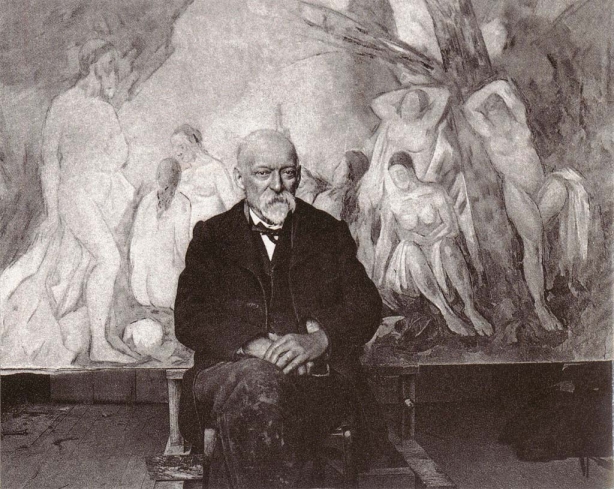
Cézanne